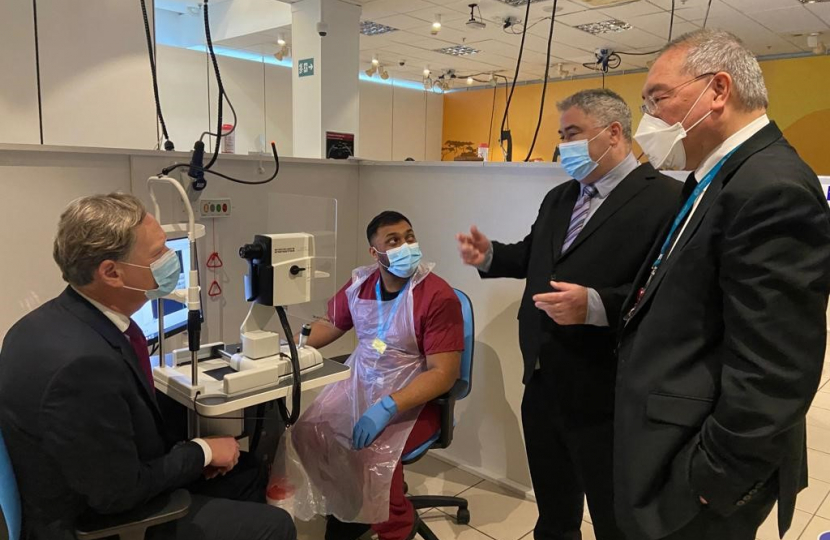Since the beginning of the pandemic, over one million ophthalmology appointments in the NHS have been delayed, causing a huge backlog in patients being examined and assessed. Regrettably this means that some people are at risk of sight loss. Matthew has been calling on the Government to establish a National Eye Care strategy to identify and establish bold and innovative solutions to prevent sight loss and to establish greater numbers of clinical diagnostic centres to examine patients closer to their homes.
One excellent example of a local diagnostic centre is at Brent Cross where Moorfields Eye Hospital has created a clinic for patients with medical retina conditions and glaucoma. This has enabled the expansion of outpatient capacity across the NHS for two of the largest outpatient sub-specialities within ophthalmology.
Matthew visited Brent Cross to see for himself how the clinic has come to patients by its location in the shopping centre and how the HERCULES study is being progressed to identify what causes delay to patients being examined, assessed and diagnosed in as short as time as possible. Recent Parliamentary interventions by Matthew have revealed that the Government is aiming for 90% of Trusts in England to have Electronic Patient Records by 2023 and 80% of social care providers to have a Digital Social Care Record by 2024. Combined with an additional £2.3 billion to increase the number of community diagnostic centres to 160 by 2025.
This means localised appointments for people that will allow diagnosis by specialists using telehealth technology resulting in faster treatment times based on clinical priority.
Matthew said: “What we now have at Brent Cross is the future of health care. People can get early appointments at a convenient location and have the results assessed remotely by highly specialised staff. Using a combination of personal intervention and the use of artificial intelligence to categorise diagnoses, those in immediate clinical need can be treated as speedily as possible.”



